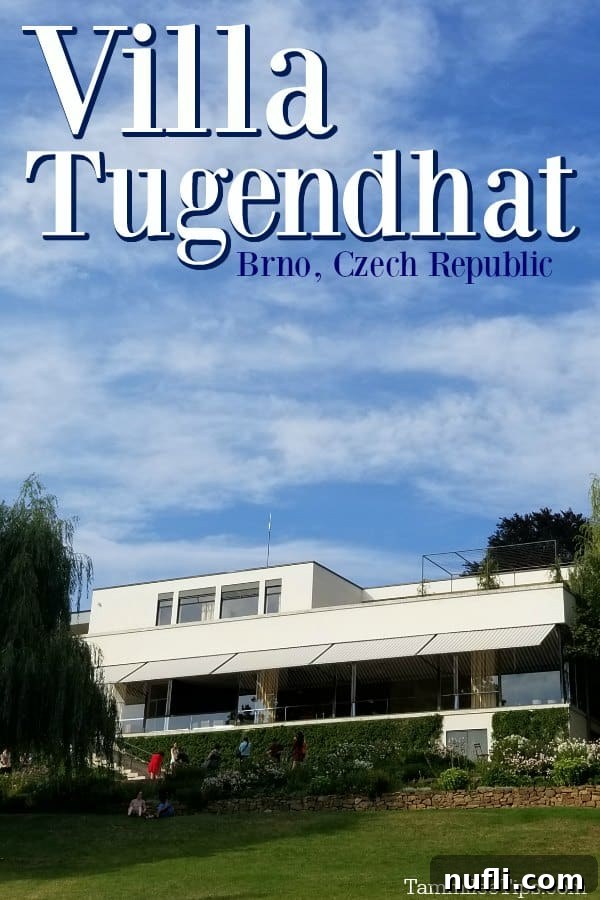Discover Villa Tugendhat: A UNESCO Modernist Masterpiece in Brno, Czech Republic
Nestled on a hillside overlooking the historic city of Brno in the Czech Republic, Villa Tugendhat stands as a monumental testament to modern architecture. Designed by the visionary Ludwig Mies van der Rohe and completed in 1930, this UNESCO World Heritage site is far more than just a house; it’s a groundbreaking manifesto of the “free plan” concept and a pioneering example of Functionalist architecture. Its timeless design, revolutionary use of materials, and captivating history make it an essential pilgrimage for architecture enthusiasts and history buffs alike. From its initial commission by the avant-garde Tugendhat family to its tumultuous journey through war and neglect, culminating in meticulous restoration, Villa Tugendhat’s story is as compelling as its minimalist aesthetic.
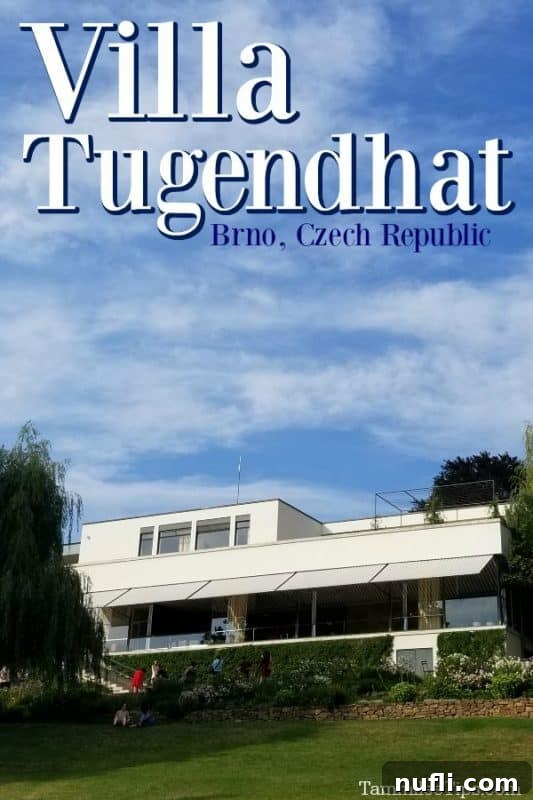
Short on Time? Here are My Top Picks for Your Brno Visit:
🏨Find Hotels and Vacation Rentals in Brno
📍Discover the Best Tours in Brno
A Legacy Etched in Modern Design: Villa Tugendhat, UNESCO World Heritage Site
The story of Villa Tugendhat begins with Fritz and Greta Tugendhat, a wealthy and progressive Jewish couple from Brno, who commissioned Ludwig Mies van der Rohe in 1928 to design their family home. They desired a spacious, modern, and functional residence that would reflect their sophisticated lifestyle and progressive ideals. Mies van der Rohe, already a prominent figure in the modernist movement, was given an almost limitless budget and complete artistic freedom, allowing him to push the boundaries of residential architecture.
Completed in 1930, the villa immediately garnered international attention for its revolutionary design principles. However, the Tugendhat family’s enjoyment of their architectural marvel was tragically cut short. In 1938, facing the escalating threat of Nazi Germany due to their German Jewish heritage, they were forced to emigrate from Czechoslovakia, leaving behind their beloved home and a significant piece of architectural history.
A Turbulent History: From Family Home to National Treasure
The villa’s post-Tugendhat era was marked by dramatic shifts. During World War II, it was seized by the Gestapo and used as an office and apartment. Towards the end of the war, it suffered significant damage when Soviet soldiers occupied and devastated parts of the building. The elegant interiors, once a symphony of rare materials and custom furniture, were largely destroyed or plundered.
Following the war, in 1950, Villa Tugendhat was nationalized by the Czechoslovak state. It embarked on a series of less glamorous roles, serving first as a dance school and later as a rehabilitation center for children with spinal defects. These uses, while noble, further altered the original design and function of the interior spaces, reflecting the changing political and social landscape of the country.
The first attempts at preserving this architectural gem began between 1980 and 1985 with initial repairs. Subsequently, the villa found a new purpose as a ceremonial facility for the city of Brno, hosting significant diplomatic and political events. Notably, in 1993, the historic agreement formalizing the separation of the Czech Republic and Slovakia was signed within its walls, specifically at the iconic large circular table in the main living area, cementing its place in modern European history.
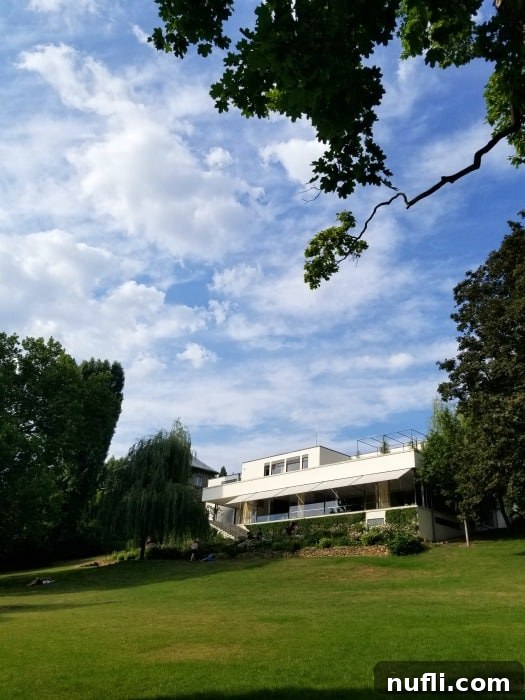
Since 1994, Villa Tugendhat has been operated by the Brno City Museum, which opened it to the public as the first monument of modern architecture in the Czech Republic. The most extensive and meticulous restoration project took place from 2010 to 2012. This ambitious undertaking aimed to return the villa to its original splendor, relying on extensive historical research, original plans, and testimonies from the Tugendhat family. The restoration saw the painstaking re-creation of lost elements, from the unique furniture to the sophisticated technical systems, allowing visitors today to experience Mies van der Rohe’s vision almost exactly as it was intended.
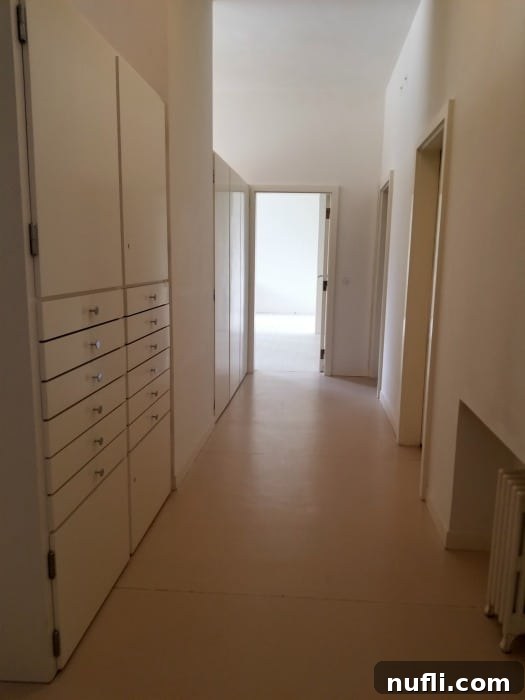
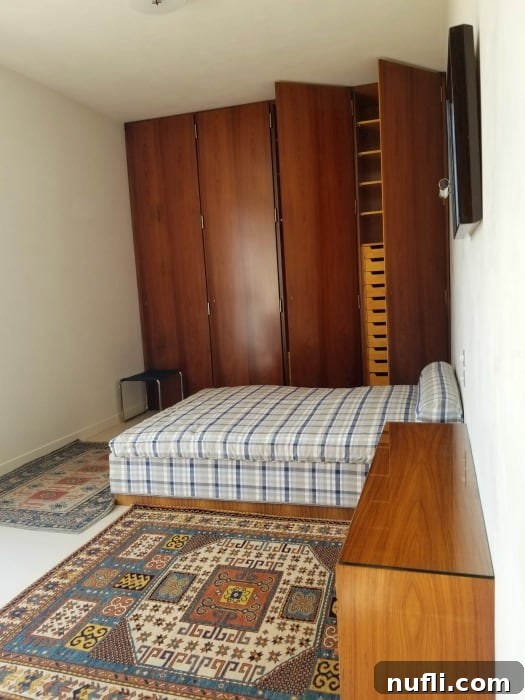
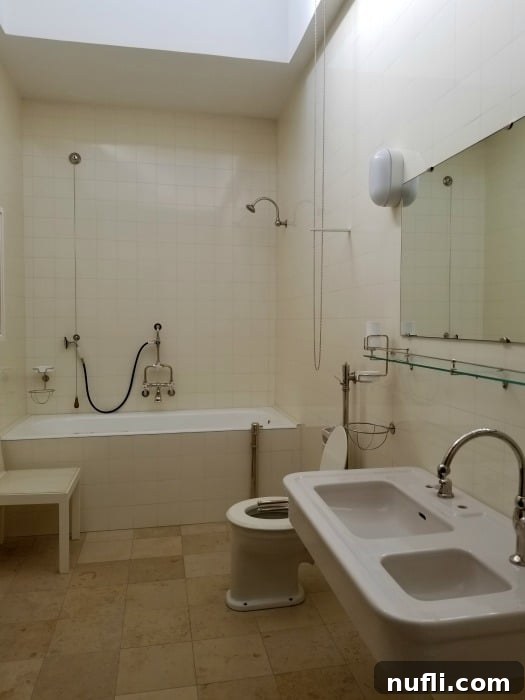
Architectural Brilliance: Mies van der Rohe’s Vision
Villa Tugendhat is celebrated as a paradigm of modern architecture, showcasing Ludwig Mies van der Rohe’s iconic principles, particularly his “less is more” philosophy and the revolutionary “free plan” concept. At its core, the villa employs a robust steel load-bearing structure, featuring distinctive cruciform columns that allow for an unprecedented fluidity of space. Unlike traditional homes, internal walls here are non-load-bearing, meaning rooms flow into one another without rigid divisions, creating a sense of openness and connection to the surrounding environment.
The choice of materials was pivotal to Mies van der Rohe’s aesthetic. The interior is adorned with opulent and meticulously chosen elements: the translucent onyx wall from Northern Morocco, which glows with a warm amber light when illuminated from behind; the elegant Italian travertine used for terraces and some internal flooring; and exquisite veneers from exotic woods such as rosewood, zebrawood, and Macassar ebony, lending warmth and texture to the sleek, minimalist design. These luxurious materials were not merely decorative; they were integral to the spatial experience, defining areas and creating focal points within the open plan.
One of the most innovative features is the large, electrically operated retractable glass wall in the main living area. This engineering marvel allows the entire space to open up to the lush garden, blurring the lines between interior and exterior and integrating the natural surroundings directly into the living experience. This seamless connection to nature, combined with the panoramic views of Brno, was central to the Tugendhats’ desire for a healthy and modern living environment.
Beyond its aesthetic appeal, Villa Tugendhat was technologically advanced for its time. It featured a sophisticated air-conditioning system, electric heating, and a unique system of photo-cells that automatically closed blinds to prevent overheating. The furniture, much of which was designed by Mies van der Rohe himself (such as the famous Tugendhat Chair and Brno Chair) or his collaborator Lilly Reich, was custom-made to complement the villa’s unique spaces, serving as sculptural elements that defined functional zones within the open layout. The villa thus stands not only as an architectural masterpiece but also as a testament to early 20th-century innovation in design and construction.

The villa is filled with meticulously crafted replicas of the original furniture that once graced the home, bringing Mies van der Rohe’s complete vision back to life. During your visit, pay close attention to the fascinating photographs displayed that showcase the painstaking efforts involved in sourcing and restoring the original types of wood, especially those surrounding the large circular table where the significant separation agreement was signed. This attention to detail underscores the commitment to authenticity in the villa’s restoration.
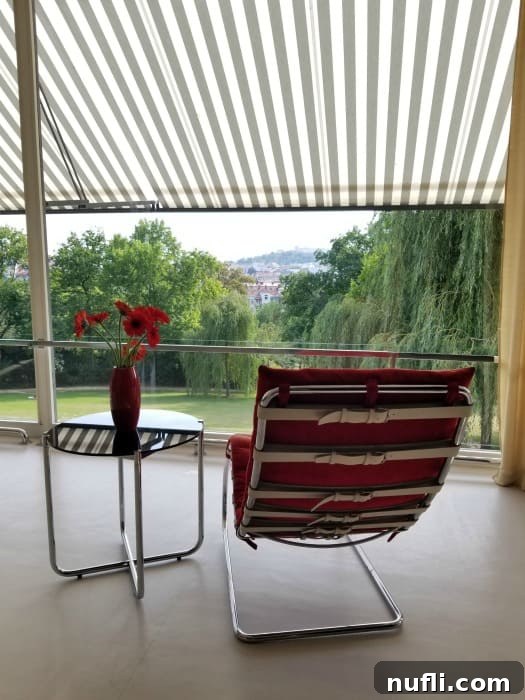


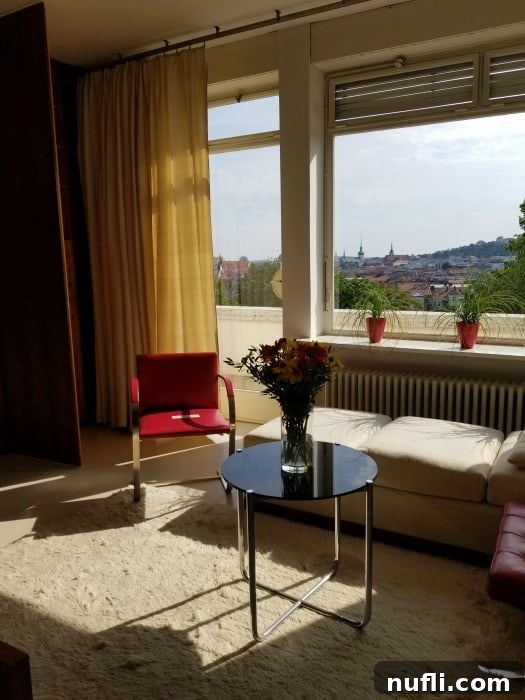
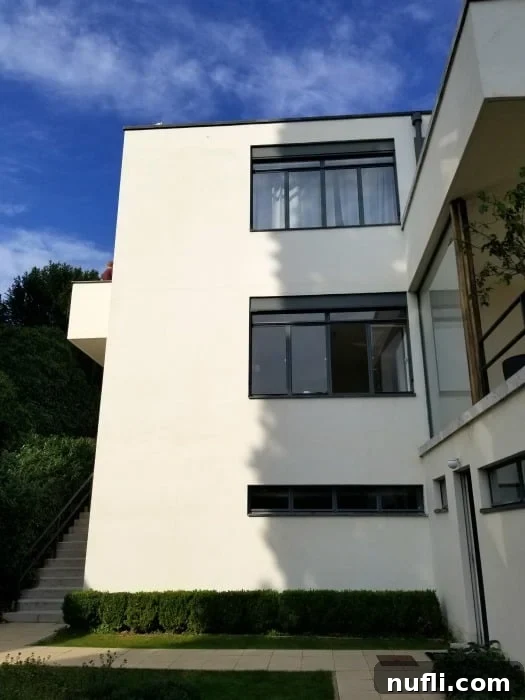
Planning Your Visit to Villa Tugendhat
Visiting Villa Tugendhat offers an unparalleled opportunity to step inside a masterpiece of 20th-century architecture. Due to its immense popularity and the intimate nature of the tours, securing your tickets well in advance is absolutely crucial. This site is incredibly sought after, and guided tours, which offer invaluable insights into the villa’s history and architectural significance, sell out very quickly. We’ve encountered numerous locals who still haven’t managed to get a tour reservation, underscoring the high demand. It is highly recommended to book several months ahead, especially if you plan to visit during peak season or on a weekend.
Tickets and Reservations
Tickets for the Villa Tugendhat tour, which typically includes access to the interiors and a guided explanation, can be booked and purchased directly. While an online reservation system is available through the Brno City Museum (usually linked on the official Villa Tugendhat website), it’s often advisable to check for the most current booking procedures on their official site as they can change. For direct inquiries or to make reservations, especially for groups or specific dates, you can reach out via phone or email:
- Official Website for Reservations: Villa Tugendhat Basic Information
- Phone: +420 515 511 015 / 17
- E-mail: [email protected]
The online ticket purchasing system of the Brno City Museum can be accessed directly HERE. Please note that booking procedures may have specific windows (e.g., bookings for the first half of a year might open on a particular date in the preceding year).
If you are unable to secure a tour reservation for the interiors of Villa Tugendhat, don’t despair! You can still experience a part of its magic. For a modest fee (typically 50 CZK), you can enjoy the beautiful, terraced gardens surrounding the villa. These gardens offer stunning views of Brno and are a perfect spot for a leisurely picnic or a relaxing afternoon. It’s a wonderful way to appreciate the exterior architecture and the careful integration of the building into its landscape, even without entering the house itself.
Getting to Villa Tugendhat
Villa Tugendhat is situated in a quieter, residential area outside of Brno’s immediate city center. While it’s certainly walkable for those who enjoy a longer stroll and don’t mind uphill climbs, it would be quite a significant walk from the main historical areas. For convenience, you will most likely want to grab a taxi or utilize a ride-sharing service like Lift-A-Go to reach the villa directly.
Alternatively, Brno’s efficient public transport system offers several options:
- From the Main Railway Station (Hlavní nádraží): Take tram no. 9 to the “Tomanova” stop. From there, it’s approximately a 20-minute walk along Tomanova street to the villa.
- From the Zvonařka Bus Station: Catch bus no. 67 to the “Schodová” stop. From there, proceed up Schodová street and then along Černopolní street, which is about a 20-minute walk.
- From Česká Street (City Center): Take tram no. 3 or 5 to the “Dětská nemocnice” stop. From this stop, it’s roughly a 15-minute walk along Černopolní street.
Whichever method you choose, allow ample time for travel, especially if you have a timed tour reservation.
Opening Hours and Visitor Information
The villa’s opening hours vary slightly depending on the season:
March – December
| Monday | CLOSED |
| Tuesday | 10 AM – 6 PM |
| Wednesday | 10 AM – 6 PM |
| Thursday | 10 AM – 6 PM |
| Friday | 10 AM – 6 PM |
| Saturday | 10 AM – 6 PM |
| Sunday | 10 AM – 6 PM |
The last entrance tickets for the full villa tour can typically be purchased at the cash desk at 5:30 PM, but availability depends on pre-booked tours.
January – February
| Monday | CLOSED |
| Tuesday | CLOSED |
| Wednesday | 9 AM – 5 PM |
| Thursday | 9 AM – 5 PM |
| Friday | 9 AM – 5 PM |
| Saturday | 9 AM – 5 PM |
| Sunday | 9 AM – 5 PM |
During these colder months, the last entrance tickets are generally available at the cash desk at 4:30 PM.
Important Visitor Rules:
- Group Size: A maximum of 15 people is allowed in one tour group. This strict limit is in place to ensure the preservation of the delicate interiors and to allow for an intimate, high-quality visitor experience.
- Footwear: High heel shoes are strictly not permitted inside the Villa. This rule is essential to protect the historic and original natural linoleum floor, which is a significant part of the villa’s design integrity. It is advisable to wear comfortable, flat shoes for your visit.
A visit to Villa Tugendhat is more than just a tour; it’s an immersive journey into a pivotal moment in architectural history. Its blend of innovative design, luxurious materials, and a deeply moving past makes it an unforgettable destination in the heart of Central Europe.
Explore More of the Czech Republic
If you’re captivated by the charm of the Czech Republic, consider extending your adventure beyond Brno. We have more guides to help you plan your travels:
- Things to do in Brno
- Things to do in Ostrava
- Hot Air Balloon Ride over Brno
- Historic Car Tour of Ostrava
- Exploring Český Krumlov
Check out all of our Czech Republic Travel Guides for more inspiration!
